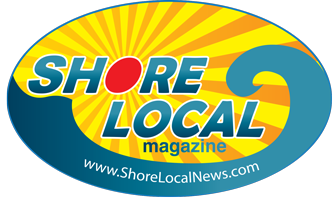By Eric Reich
In my experience, retirees are often confused regarding whether or not to leave money in their former employer sponsored plan or to roll it to an IRA. The answer, of course, is never a simple one because there are several factors to consider based on your personal situation. Here is a list of items you should carefully consider when making that decision.
1. Investment Choices- In an IRA, you have nearly unlimited choices in what you can invest the funds in vs. a potentially limited menu in the company plan. This is often the #1 argument for rolling out the funds. Personally, I don’t want to leave money with a former employer. This is especially true when you don’t retire from that employer but simply change jobs. I want control of my money and don’t want it to be affected every time the company decides to change plan providers, etc.
2. Beneficiary Flexibility- This may be very important to individuals in second or third marriages. In a company plan, your spouse is your beneficiary unless they sign off agreeing to let you name another person, such as children from a previous marriage. Even if a future spouse waived those rights in a prenuptial agreement, the day you get married that part of the agreement no longer applies. Only a spouse can waive that right, and a fiancé signing a prenup is not a spouse when they sign it. Therefore they never really gave up that right. If your plan is to leave the money to your children, you might want to consider rolling it to an IRA first before you get married. In an IRA, you can name anyone as your beneficiary. Also, some company plans will not allow you to name a trust as a beneficiary of your plan. Yes, the plan not your estate documents control this. If the plan document doesn’t allow for it, then you can’t do it.
3. Do you need the money? – If not, then money might be better left inside a company plan if you are still working. As long as you are an active employee at any employer participating in an active plan, you may be able take advantage of the still working exception (as long as you own less than 5% of the company) to required minimum distributions (RMDs). Under the exception, the money in the plan does not have to be factored in to the calculation for your RMD-meaning you are required to take out less money. There is no exception for IRAs.
4. College Planning- If you intend to use some of your qualified funds to pay for college, which is not my favorite idea by the way, you may be better off taking those funds out of your IRA than your company plan. An IRA allows for an exception to the 10% penalty, which applies when you take money out of a retirement plan before age 59 ½. Any money you take out will still be taxable as ordinary income but not subject to the 10% penalty like it would be from a plan.
5. Creditor Protection- Funds inside of an ERISA (Employee Retirement Income Security Act of 1974) plan have more creditor protection than they do inside of an IRA. The IRA may provide protection in the case of a bankruptcy and only up to certain limits but not necessarily beyond that.
6. Rule 72(t) (the age 55 exception) – If you retire before age 59 ½, there is a way to take money out of your company plan without paying the 10% penalty for early withdrawals. This can be fairly complicated so I won’t go into much detail, and I strongly suggest you consult with your tax advisor before doing this. As long as you take the funds out in “substantially equal payments” over 5 years or until age 59 ½ (whichever is longer), you may be exempt from the penalty, but this only applies to plans, never to IRAs.
7. Fees- Lastly, don’t forget to compare the fees in your company plan vs. the fees in your IRA. Fees ultimately affect performance, so the lower the fees the better.
This certainly isn’t a complete list of considerations, but hopefully it helps you make a more informed decision about what to do with your money once you leave your job or retire.
A rollover of retirement plan assets to an IRA is not your only option. Carefully consider all of your available options which may include but not be limited to keeping your assets in your former employer’s plan; rolling over assets to a new employer’s plan; or taking a cash distribution (taxes and possible withdrawal penalties may apply). Prior to a decision, be sure to understand the benefits and limitations of your available options and consider factors such as differences in investment related expenses, plan or account fees, available investment options, distribution options, legal and creditor protections, the availability of loan provisions, tax treatment, and other concerns specific to your individual circumstances.
Securities offered through Kestra Investment Services, LLC (Kestra IS), member FINRA/SIPC. Investment advisory services offered through Kestra Advisory Services, LLC (Kestra AS), an affiliate of Kestra IS. Reich Asset Management, LLC is not affiliated with Kestra IS or Kestra AS. The opinions expressed in this commentary are those of the author and may not necessarily reflect those held by Kestra Investment Services, LLC or Kestra Advisory Services, LLC. This is for general information only and is not intended to provide specific investment advice or recommendations for any individual. It is suggested that you consult your financial professional, attorney, or tax advisor with regard to your individual situation. To view form CRS visit https://bit.ly/KF-Disclosures.









